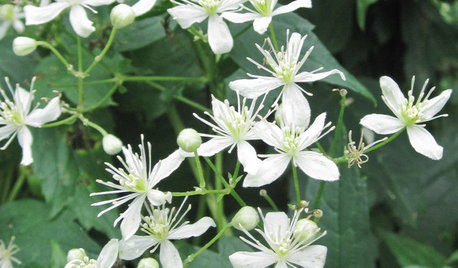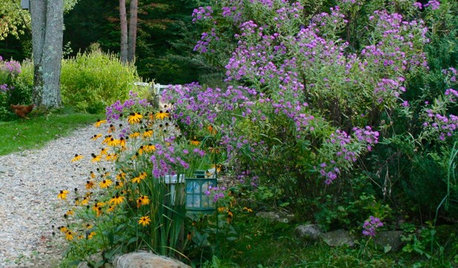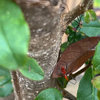Is is environmentally irresponsible to plant non-native plants?
hoorayfororganic
16 years ago
Related Stories

INSPIRING GARDENSNative Plants Bring 10 Southern California Front-Yard Gardens to Life
Rare plants, rain gardens and wildlife habitats are just a few of the features showcased on the 2016 Theodore Payne Native Plant Garden Tour
Full Story
GARDENING FOR BUTTERFLIES3 Ways Native Plants Make Gardening So Much Better
You probably know about the lower maintenance. But native plants' other benefits go far beyond a little less watering and weeding
Full Story
GARDENING GUIDESHow to Find the Right Native Plants for Your Yard
Find plant maps, sale sites and guides that make going native in the garden easier than ever
Full Story
GARDENING GUIDESWe Bust 4 More Native Plant Myths
Have you been taken in by these fallacies about gardening with native plants?
Full Story
GROUND COVERSNative Alternatives to English Ivy, Japanese Pachysandra and Periwinkle
These shade-loving ground covers are good for the environment and say something about where you are
Full Story
NATIVE PLANTSGreat Native Plant: Grow Wild Quinine for Its Unique Clusters of Blooms
Get connoisseur cred and unique blooms with this uncommon plant. Bonus assets: It’s low maintenance and drought tolerant
Full Story
GARDENING GUIDESGreat Design Plant: Asclepias Incarnata for a Butterfly Garden
Beautiful swamp milkweed makes it easy to help monarchs and other pollinators in eastern U.S. gardens
Full Story
GARDENING GUIDESGreat Design Plant: Silphium Perfoliatum Pleases Wildlife
Cup plant provides structure, cover, food and water to help attract and sustain wildlife in the eastern North American garden
Full Story
GARDENING GUIDESGreat Design Plant: Clematis Virginiana
Devil’s darning needles, a vigorous vine native to eastern North America, likes partial shade and many types of soils
Full Story
GARDENING GUIDESTop 10 Native Plants for the Northeast
For a low-maintenance, wildlife-friendly landscape, use native plants adapted to the climate and range of soils in the Northeast
Full Story




hoorayfororganicOriginal Author
pnbrown
Related Discussions
Native Trees vs. Non-Native Trees
Q
Canary Island Date Palms ravaged by non-native beetle
Q
what non native trees are you planting that are cool?
Q
IFAS Assessment Site for Non-Native Plants
Q
hoorayfororganicOriginal Author
marshallz10
hoorayfororganicOriginal Author
lorna-organic
crankyoldman
hamiltongardener
skagit_goat_man_
hoorayfororganicOriginal Author
hoorayfororganicOriginal Author
gonebananas_gw
hamiltongardener
hoorayfororganicOriginal Author
pnbrown
justaguy2
crankyoldman
marshallz10
lamalu
hoorayfororganicOriginal Author
skagit_goat_man_
wayne_5 zone 6a Central Indiana
pnbrown
hoorayfororganicOriginal Author
skagit_goat_man_
gardengal48 (PNW Z8/9)
marshallz10
tomakers
tasymo
gonebananas_gw
alfie_md6
tasymo
tasymo
joepyeweed
jmsimpson9
the_virginian
lou_spicewood_tx
the_virginian
joepyeweed
linchat
tetrazzini
linchat
concretenprimroses
joepyeweed
macheske
lou_spicewood_tx
the_virginian
kristimama
led_zep_rules
tsugajunkie z5 SE WI ♱